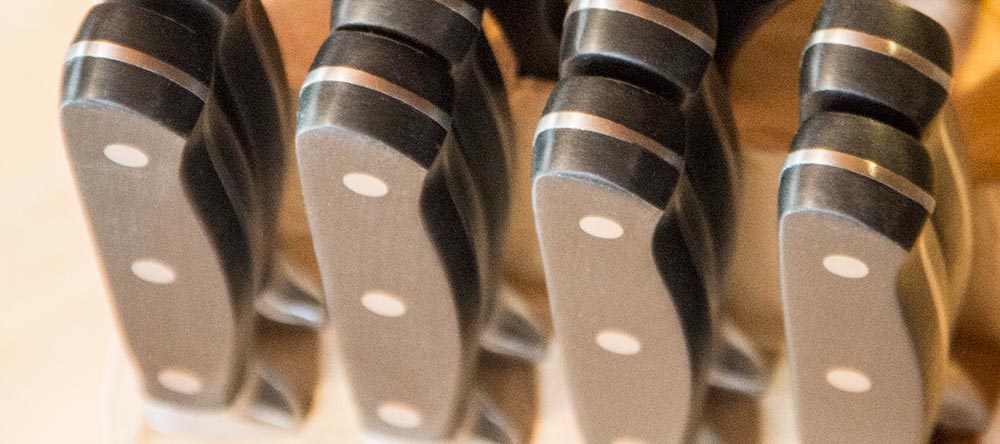
The first step any aspiring chef, or talented home cook, takes is to purchase a quality culinary knife set. I’d say the knife set, along with a good cutting board or butchers block, tops the list of items to acquire. Even if a skillet is out of reach for the time being, we can, at the very least, practice our knife skills.
I had almost nothing. The knife set I’ve been working with for the past ten years is stainless and serrated, meaning, I have no idea how to sharpen any of the pieces. And trust me when I say this – the knives cut like I’ve been out in the back yard sawing down a tree. Needless to say, they aren’t “professional” in any sense of the word.
The thing is, I’m just beginning this journey of learning how to cook. I’m not even sure I like it yet. What if I were to head out and pick up one of those really expensive knife sets and, in a few weeks, discover I’ve moved away from the whole idea? I suppose it wouldn’t be the first time a few hundred dollars worth of metal were to sit on someone’s countertop for eternity.
My cutting board is another story. I do have a white plastic board that Laura and I picked up some time along the way. It’s not photo-worthy or anything, but it works well for day to day use. Luckily, a gentleman who lives right up the road from us handed me a full size butcher block just a few days ago. I’m in the midst of sanding and oiling it, so that should be ready to go in no time at all. In fact, the photos that were taken for this very post were taken using the butcher block I’m referring to. I’m excited to have found something like this and the timing couldn’t have been better.
Since I knew I needed a chef’s knife to get this ball rolling, I began poking around on Amazon. I was initially attracted to the Victorinox brand because of its very reasonable pricing and great recommendations, but eventually gravitated toward J.A. Henckels for similar reasons. I knew this would happen – that I’d quickly get sucked into the world of “cooking equipment.” You know, when you walk in wanting to purchase a toothpick and walk out with a wheelbarrow full of stuff you never knew you needed.
I’m not sure when it happened – possibly after I began adding up the prices for a chef’s knife, a paring knife, a sharpener (honer) and a holder. It sort of got out of control. Good thing a light bulb went off in my head and I asked myself why I wasn’t looking into sets as opposed to individual pieces. After I recognized my mistake, I quickly found a knife set that made perfect sense. And it’s put out by Amazon.
It’s a gamble when we purchase something that’s the equivalent to a no-name brand. Not that Amazon puts out sub-par equipment or anything, but I suppose we’re somewhat addicted to marketing. As consumers, we prefer to have heard of something before we purchase it. And we don’t often hear of “AmazonBasics.” Let me tell you though, I’ve bought AmazonBasics products in the past and have never had issue with any of them. All that’s missing is the label.
After browsing around for a while, I decided to purchase the “AmazonBasics Premium 18-Piece Knife Block Set.” I received it yesterday and after I opened it, my jaw almost hit the floor. Now, I’m no expert or anything like that, but I’m telling you, I have no idea what more I need. The set has all the pieces I was looking for and each of the knives is extremely sharp. I already did the “paper” test, where I held up a piece of copy paper and slid the knife down it until it was sliced in half. They’re sharp. And after a few swipes down the honer, they get even sharper.
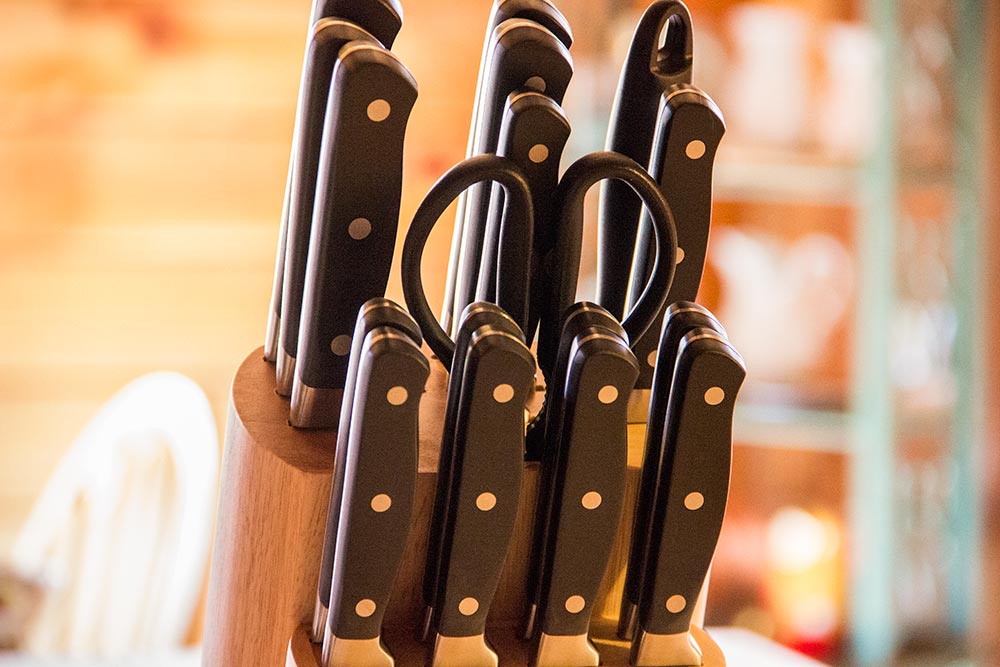
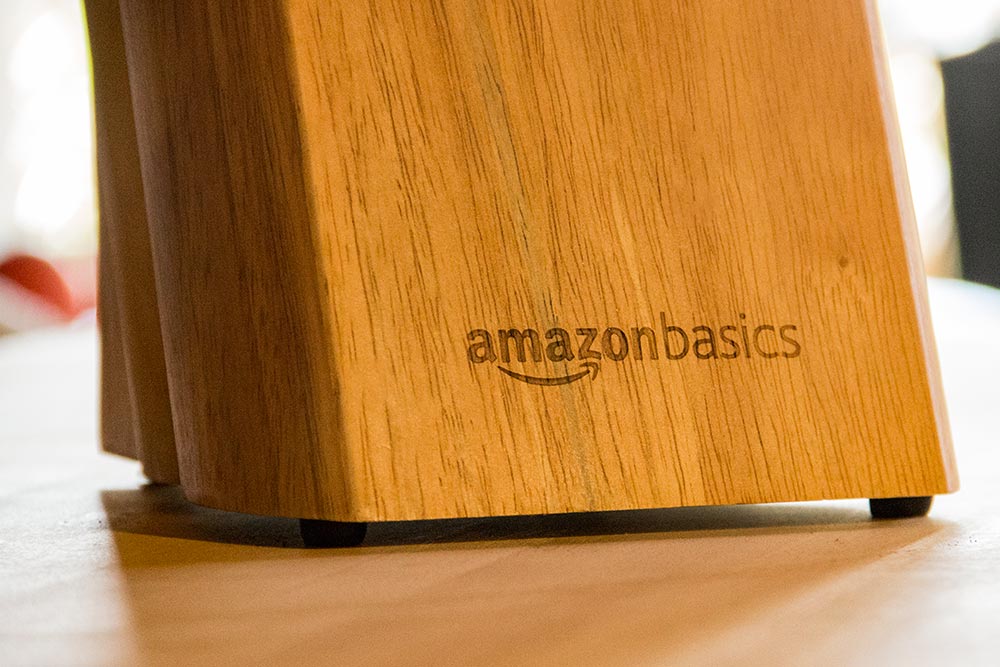
I tested out the chef’s knife last night when I chopped up some cabbage. It works well and after ten seconds of use, I noticed that my knuckles were no longer hitting the cutting board as I chopped. My previous chef’s knife – the one I mentioned above – has a handle that’s far too close to the blade, meaning that any time I attempted to slice or dice in the past, my fingers would knock the plate, countertop or board – whatever I was working on. I may have gotten used to it through the years, but after last night’s spoiling, I don’t think I’ll be going back to it.
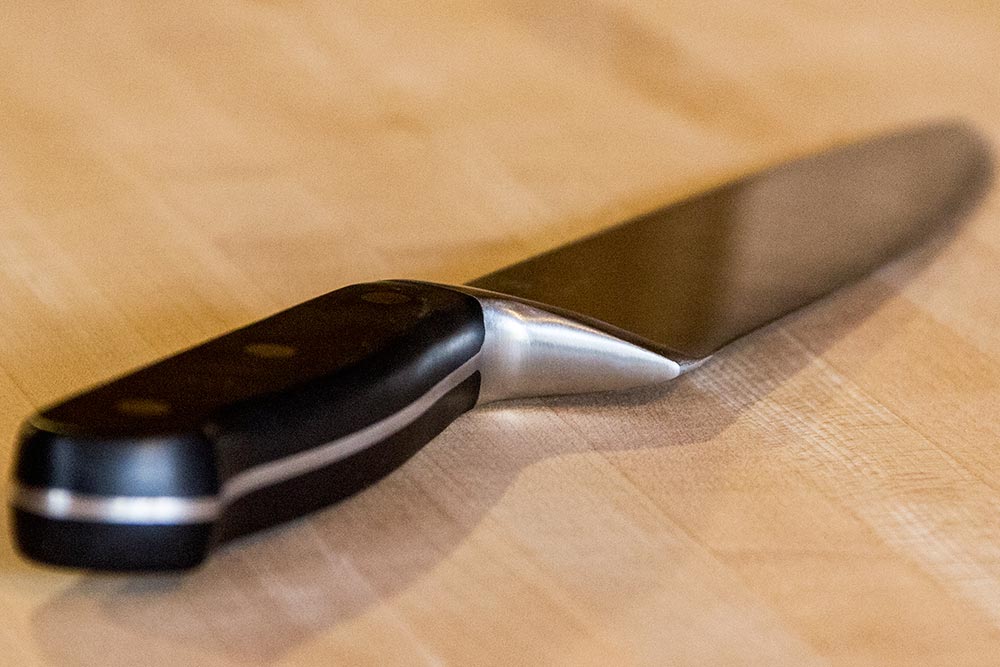
The set only cost a few cents over $64. Not bad, considering the individual chef’s knives I was considering were in the range between $36 and $150. And since everything is now made in China (even some of the better brands), it didn’t make and sense to look much further.
It includes the following knives:
8-inch Chef’s
7-inch Santoku
8-inch Slicing (which is a bit unnerving when you look at it)
8-inch Bread
5.5-inch Utility
6-inch Boning
3.5-inch Paring
(8) 4.5-inch Steak Knives
and:
8-inch Kitchen Shears
and an:
8-inch Sharpener
and finally a:
Wood Block.
You simply can’t beat all this for $64, especially when any professional chef would agree it’s a good value for a beginner. I’m certain they would agree.
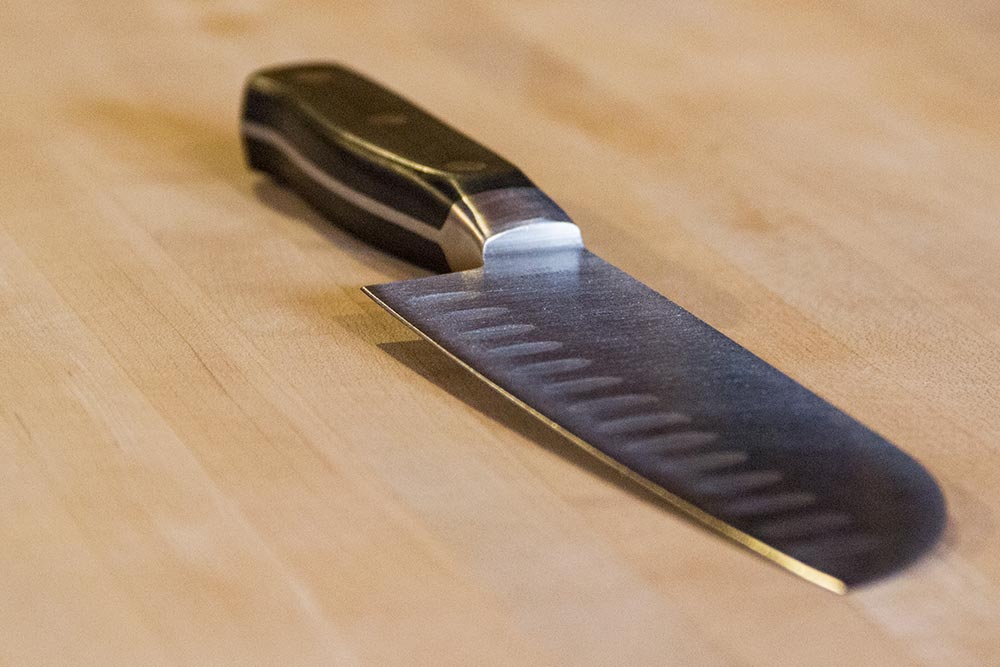
One of the goals of this post is to give you an up-close look at a few parts of these knives. Laura and I took some photos and after going through them, I feel like the follow give a decent representation of what you can expect if you were to purchase something like this. I’m attempting to show off the blade edge, the bolster and the handle.
This is a photo of one of the steak knife’s bolsters. “Bolster” is a word I recently learned and is defined as “…the thick junction between the handle and the knife blade which provides a smooth transition from the blade to the handle.”
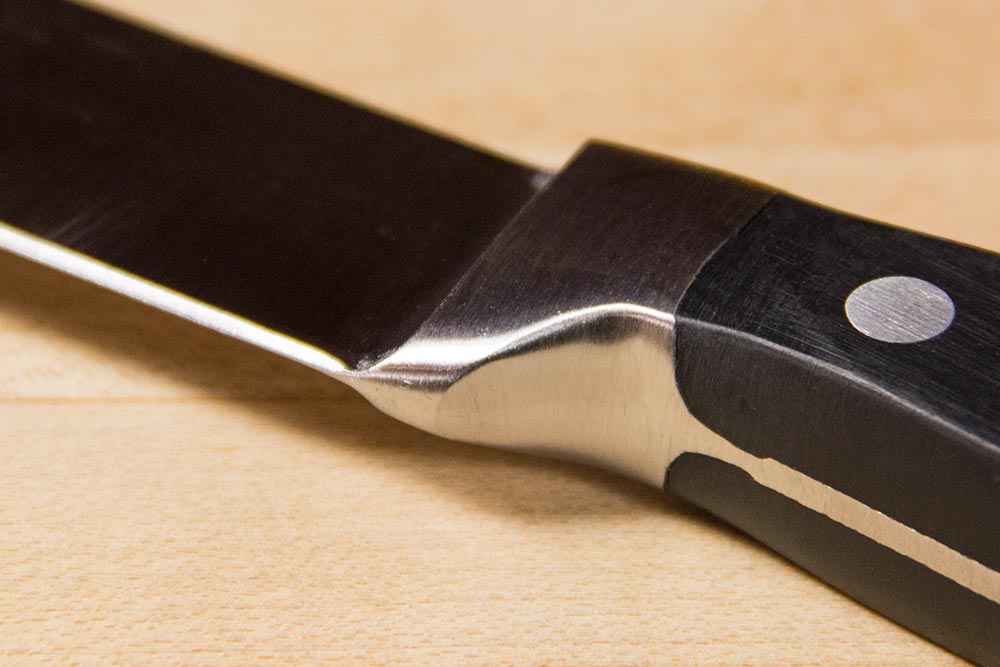
This is the serrated edge of one of the steak knives. If you look closely, you’ll find that it’s not perfect. There are a few imperfections along the blade, but I’m not sure I’d concern myself with any of them.
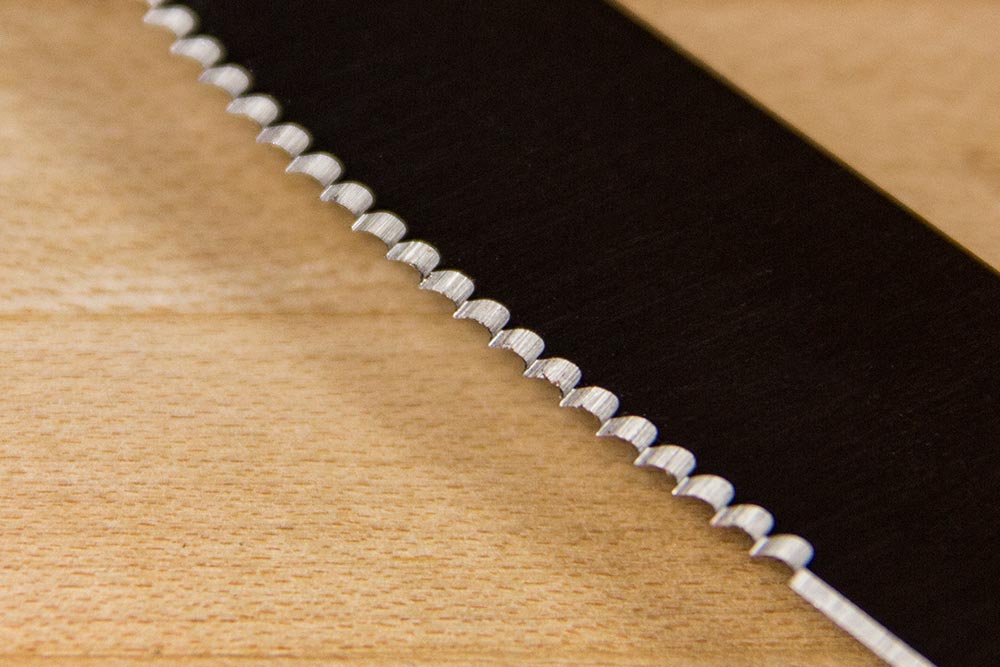
Since the handle of any knife is one of the more intimate parts, I thought it would be a good idea to get a nice, close-up shot of one of them. As you can see, the construction is tight and it looks “weighty.” It’s also nice that these are “full tang” knives, meaning, the metal of the blade extends all the way through the handle.
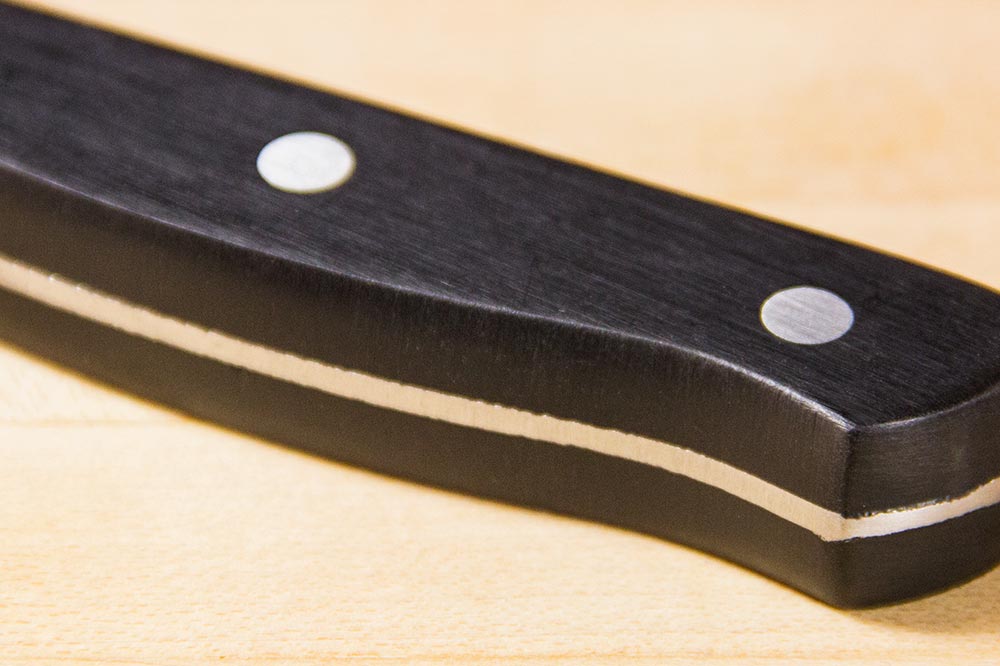
This is the bolster of the chef’s knife. I think the goal here was to capture the “stainless steel” branding.
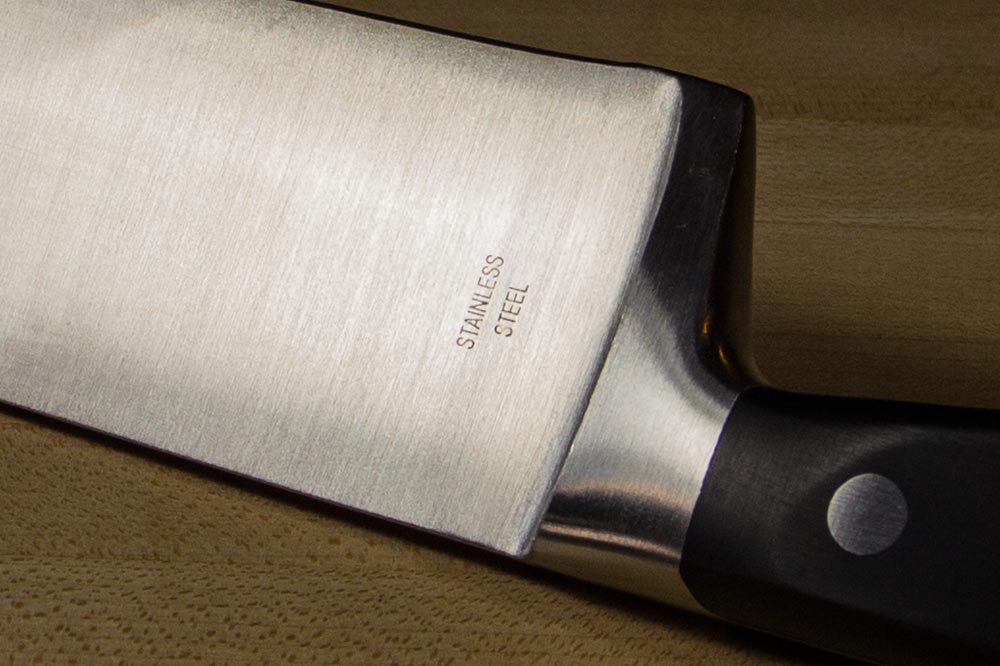
And finally, since the bread knife has somewhat of a unique blade, I thought I’d show that to you as well. Don’t let the fact that it’s serrated give you the impression that it’s not as sharp as the other straight edges.
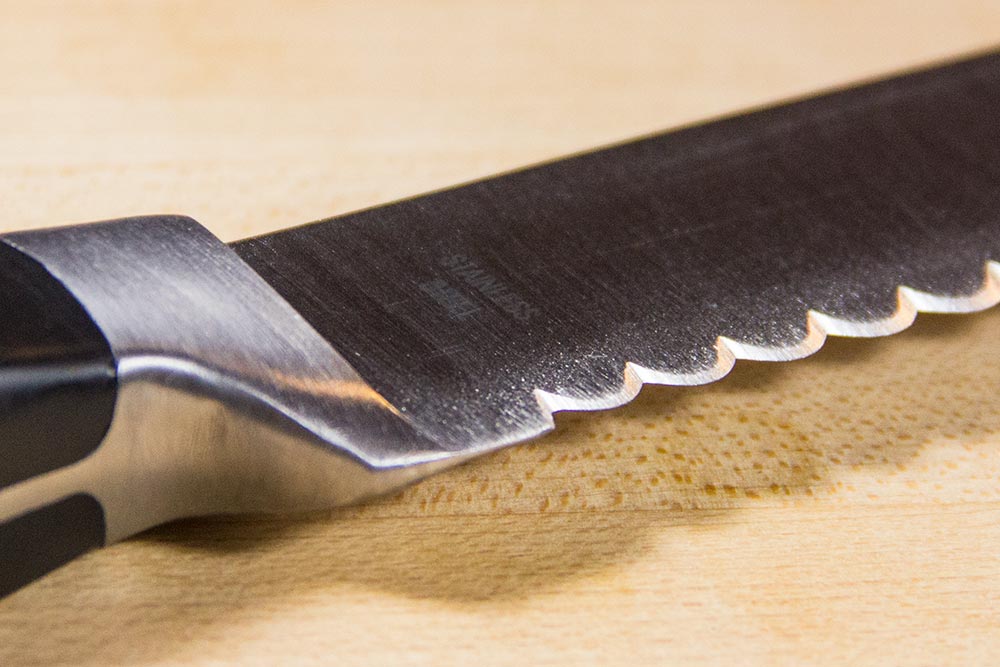
I think that’s it. If you have any questions about these knives, please feel free to ask in the comment section below. I know that some folks are concerned with weight and other factors, so if you’re curious, I’m sure I can find a small scale somewhere.
——
If you’ve enjoyed today’s post and found it helpful, please share it with a friend. Also, if you’d like to continue reading and would like my posts sent directly to your email inbox, simply sign up for my newsletter. I’ll send each and every post directly to you. Thanks!
Leave a Reply